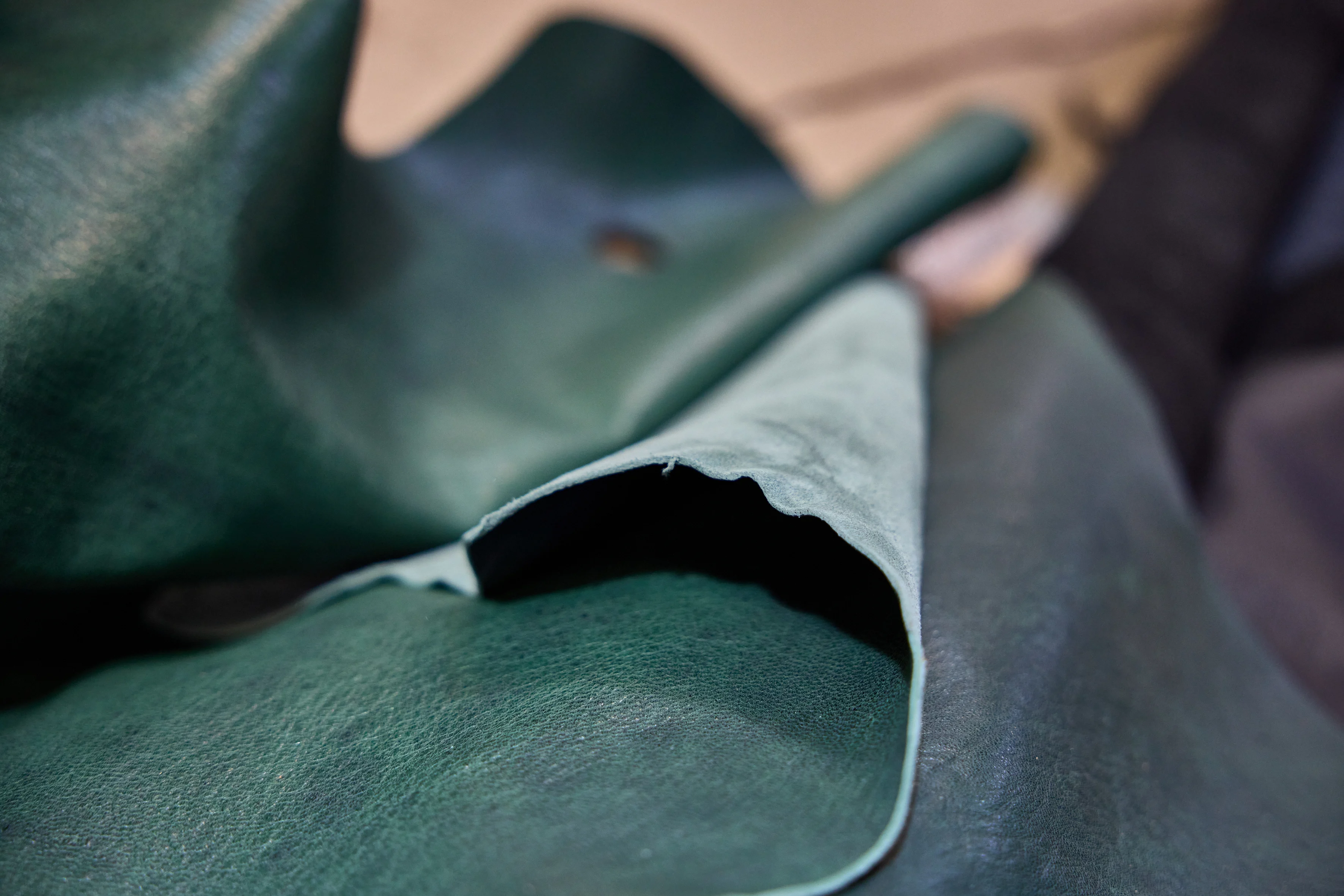
Vegetable-Tanned Leather
Our leather-goods are manufactured using premium vegetable-tanned leather. Vegetable tanning is a non-toxic method of treating leather that only uses natural tannins extracted from the barks, leaves and branches of trees and plants.
Vegetable tanning is the oldest and most sophisticated method of tanning. Historically, each country used the materials locally available for its tanning process. For example, in Europe this was chestnut and for the UK this was oak.
How is leather tanned?
The first step in the vegetable tanning process is prepping the hides, rehydrating and removing the hair. The next step is to tan the hide. Historically this was simply done with a series of pits containing different concentrations of tannin. Today this is most commonly done with the addition of drums to speed up the penetration of the tannin. The pelts will then undergo a series of different strength tannins until the process is finished and they are dried.
Finally, the leather is finished with different oils, waxes and sealants to keep it protected.
Our criteria
The mass production of leather can have serious environmental impacts, as can any mass manufactured product. However, there are more sustainable leather manufacturing options. By using the by-product of meat and dairy farming, making to order and not using harsh chemicals to tan the leather, the reduction in environmental impact is significant. Mix that with it being a natural and non-synthetic product, vegetable tanned leather becomes the most sustainable leather you can get.
What to expect
Leather is a natural material so surfaces may show minor imperfections and variations in colour. This is normal, and part of the charm.
Please also note that the colours shown on your screen may not be a perfect match for the true colour of the product.
Our suppliers
Tempesti
Italy
